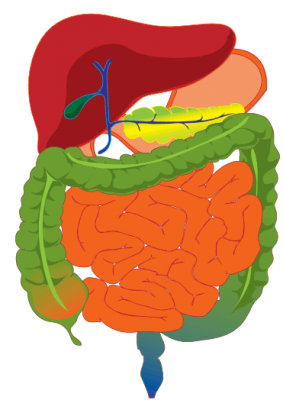Fibre: Superfood’s Least Sexy Cousin – Part 2
By Karalee Boschung RD(t)
 |
| Picture 1: ““healthy-heart” by Mark Topper, via flickr, CC BY-ND 2.0 |
After reading Part 1 of this series, you know that fibre can give immediate benefits such as a healthy intestinal tract, a stable weight, and well-fed probiotics in your gut! But what are the long term benefits of fibre intake? Today we are looking at five ways long-term fibre intake can prevent chronic diseases.
1. Leads to a Healthier Overall Diet
High fibre foods are more often than not very healthy foods already. Low fibre foods tend to be highly processed and less healthy choices. Food processing generally reduces the fibre in foods, making them smoother, creamier and whiter. Some examples of highly processed foods are donuts, white bread, corn flakes, and French fries. These foods are more processed, lower in fibre, and unhealthier choices. They would be foods to choose less often, as treats perhaps, but they should not make up the bulk of your diet.
Foods that have only been processed a little, or not at all, are healthier options that are also higher in fibre. Examples of these whole foods are: nuts, seeds, beans, whole grains (barley, quinoa etc.), fruits and vegetables. You should choose these foods daily to make up the majority of your diet. It is well established that a long-term healthy diet based on whole foods is an important factor in preventing chronic diseases such as diabetes, cancer and heart disease.
2. Lowers Blood Cholesterol
Soluble fibre can lower blood cholesterol by trapping the cholesterol excreted into the intestinal tract as bile. Soluble fibre, mentioned in part 1, is the type of fibre that combines with water in the gut to form a gel-like matrix. It traps cholesterol in this matrix and carries it out of the body. This can contribute to a healthier level of fats and cholesterol in your blood, which significantly decreases your risk of heart disease!
3. Prevents colon cancer
The American Cancer Society, reports that fibre in the diet, especially from whole grains, may prevent colon cancer. The Colorectal Cancer Association of Canada explains that the reason whole grains may provide more cancer prevention than other high fibre foods, is that whole grains are higher in insoluble fibre. As mentioned in part 1 of this series, insoluble fibre is tough plant material that passes through the gut almost entirely unchanged. It provides a sweeping function in the gut and removes potential carcinogens before they have time to be exposed to the gut for any length of time. Interestingly, fibre supplements have not been shown to decrease risk for colon cancer, only fibre from real food (also noted by the American Cancer Society). Research is still being done on how strong this effect really is, but for now, you can happily eat your fibre and know that regardless of the effect on colon cancer, you are still doing a whole lot of good for your bowels.
 |
| Picture 2: “Complete GI Tract” by Mikael Haggstrom, via Wikipedia Comons, Public Domain |
4. Prevents diverticulitis
Diverticulitis is a very painful, and unfortunately common, condition in which sections of the bowel walls weaken and form small out-pockets. These pockets then gather bacteria and particles, which can become infected and lead to diverticultitis. Consistently high fibre intake can prevent diverticulitis. Fibre can do this because it equally strengthens all sides of the bowel wall and keeps them toned. This prevents any weak sections from becoming out-pockets and increasing risk for infection.
Many people don’t realize that the intestinal tract is a muscle, and keeping it fit is important for health. Work on your skeletal muscle fitness with Jordan at Fortress Mobile Fitness and work on your bowel muscle fitness with regular fibre intake!
5. Stabilize blood sugars
Adding fibre to a meal slows down how quickly your body can access the carbohydrate in meals. Carbohydrate increases your blood sugars, which is a normal process, but sharp spikes in blood sugar can be unhealthy over time. Fibre makes your stomach work harder to crush and grind your meal, which means it takes longer for the carbohydrate from your meal to reach the small intestine and be absorbed. This leads to a slower and steadier increase in blood sugars after a meal.
This is an especially important concept for people managing diabetes, but can be applied by anyone to have lasting fullness and energy after a meal. The Canadian Diabetes Association states that, “Some researchers believe that a lifetime of blood glucose (sugar) spikes could contribute to type 2 diabetes”. This means that reducing those fast spikes in blood sugar after meals could prevent diabetes in healthy people too!
Fibre, while lesser known than many “superfoods”, provides many health benefits! It can prevent the chronic diseases of diverticulitis, colon cancer, diabetes and heart disease.
Ensure that your diet has the right balance of nutrients and is optimizing your health by booking a dietary assessment with me, the Registered Dietitian. Hit the Contact Us button and schedule your assessment today!
Keep in mind that regular exercise is another very important lifestyle factor to prevent chronic disease. Call Jordan to book a session with him for personal training and exercise advice!
Stay tuned next week for practical tips on how to actually increase your fibre intake!










